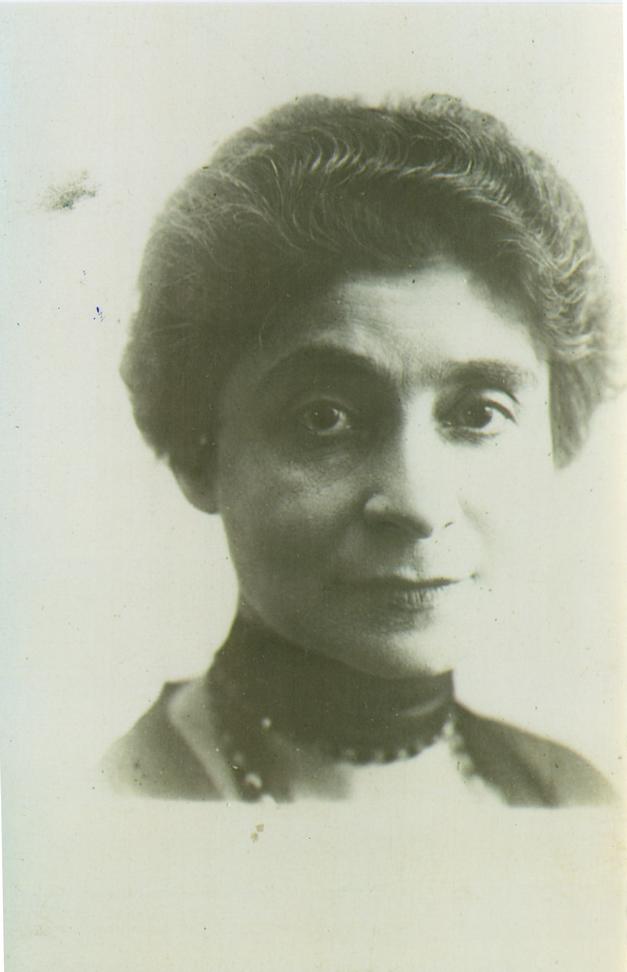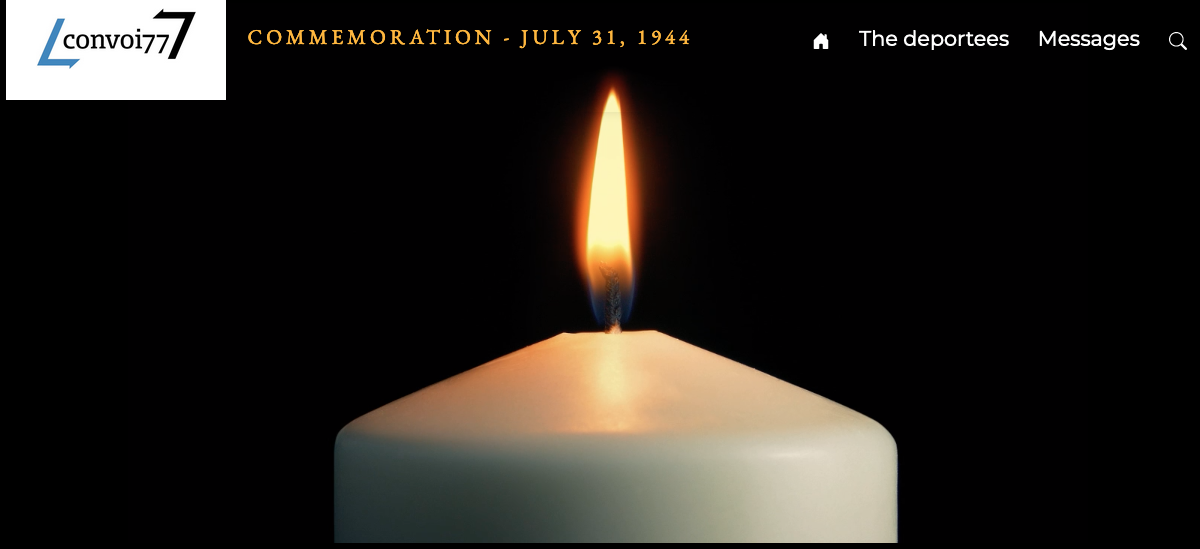Alice Lévy-Sée (née Dreyfus)
Alice Dreyfus was born in Zurich, Switzerland in 1874. She was murdered as soon as she arrived in Auschwitz. Her official date of death was later declared to be August 5,1944.
As is the case with many women of her generation, there are few traces of Alice Lévy-Sée in the archives; in the records we found, she is not listed as an individual in her own right. In most cases, she is referred to only briefly, first as a daughter, then as a wife and mother, then as a widow, and lastly as a grandmother. In view of this, it seems appropriate to set this biography within the story of a family that spans several generations and a number of cities and countries.
Sierentz (in the Alsace region of France)
Alice’s mother, Mina Dreyfus, was born on September 23 1850, in Sierentz (source: Stadsarchief.Antwerpen). Her parents were Louis Dreyfus, also from Sierentz and Rachel Levy from “Beffort” (probably Belfort). In those days, Sierentz was home to a large Jewish community (cf. Pays de Sierentz).
Sierentz is a pretty village just a few miles from Basel, in Switzerland. An information board in Place Dreyfus, near the Catholic church, explains that in 1934, “the family of Louis Dreyfus, originally from Sierentz but now living in Paris, donated this site of over 9 ares [around 1000 square feet] for public use. Sierentz’s Jewish quarter adjoined the square, with the second synagogue, dating from the late 18th century, the rabbi’s house and the school. They were all demolished in the early 1970s”. The site appears to be used as a parking lot now:

Place Dreyfus in Sierentz, our own photo, taken on December 1, 2024
Ober-Endingen (Aargau, Switzerland)
Alice’s father, Ruben Dreyfus (sometimes spelled Dreifuss), was born in Endingen, in the Canton of Aargau in Switzerland, on July 10, 1846. His parents were Luise Löwengardt, who came from Dettense in the Hohenzollen province in Germany and Markus Getsch Dreifuss (born in 1812 in Endingen, died in 1877 in Zurich), a well-known educator and a key player in the struggle for Jewish emancipation in Switzerland. Markus Getsch Dreifuss owned a house on Weidgasse in Endingen, which is still standing today.
In the 1870s, when the Jews were emancipated in Switzerland, there was an exodus from rural areas. A significant number of people who lived in the former “Judendörfer” moved to Switzerland’s major cities. Markus Getsch Dreifuss was no exception, and went on to help establish an active Jewish community in Zurich between 1872 and 1876.
Zurich (Switzerland)
When he arrived in Zurich, Ruben Dreyfus (or Dreifuss) worked as a seed merchant, and in the 1870s he helped found a seed exchange in the city. In 1871, he married Mina Dreyfus (from Sierentz, as mentioned above). Alice, who was born on June 9, 1874, was the couple’s first child, followed by Helena in 1879) and Edgar in 1882). According to the Zurich parish registers, the family was living on Bahnhofstrasse throughout this period.
Berchem (Belgium)
We next catch up with the family in 1898, by which time they were living in Berchem, near Antwerp in Belgium. En 1899, Alice se marie avec Albert Salomon Lévy-Sée, fils de Marc Lévy et de Clémentine Sée. It was there, in 1899, that Alice married Albert Salomon Lévy-Sée, whose parents were Marc Lévy and Clémentine Sée. Albert was born in Paris in 1870, but had been living in Belgium since 1885, where he was naturalized as a Belgian citizen in 1896/97. The records state that he held a doctorate in philosophy and literature, but make no mention of his profession.
The marriage had serious legal implications for Alice: according to matrimonial law in her home country at that time, by marrying a foreigner, she lost her Swiss citizenship.
Ixelles and Antwerp (Belgium)
The newlywed couple set up home in Ixelles (or Elsene), just outside Brussels. In 1900, they had a daughter, Marie-Louise-Marcelle Lévy. Just a year later, in 1901, Albert Salomon Lévy died (Death certificate)
As a result, at the age of 26, Alice became a widow with a baby to support. In 1905, she moved back to Antwerp to be near her mother, who was also a widow by then. We were unable to find any details about the family in the years that followed.
Paris
In 1922, Alice’s daughter, Marie-Louise-Marcelle, married André Antony Schoenfeld, who worked in the rubber industry at rue des Ecoles in Pantin, in the north east of Paris. They too had an only daughter, Denise, who was born on May 16, 1923 in Paris. They lived at 11, boulevard Lannes, near the Porte Dauphiné, in the west of Paris. In addition to André Antony Schoenfeld, his wife and their daughter, Alice also lived there. The writer Vivianne Forrester, née Dreyfus, one of Alice’s nieces, later reminisced about the family: “My Aunt Alice, her son-in-law, her daughter and her granddaughter all lived together on Boulevard Lannes. They were the most harmonious family ever […]. Aunt Alice was always there, almost immobile. She sat in a large armchair with her legs stretched out on a “[piece of furniture in the shape of?] X” – I remember a large empire-style piece of furniture […]. She was always busy sewing or embroidering. The home, which was “soft and warm, flooded with light”, was across the Paris ring road from the Bois de Boulogne (source: Email from Vivianne Forrester, in Paris, to Agnès Bartoll-Barrat dated February 27, 2005, held in the file on Don Barrat Bartoll, CMLXXV(84)-4, Shoah Memorial, Paris).

Alice Levy-See, born on June 9, 1874, lived at 11 boulevard Lannes in Paris, with her daughter Marie-Louise (Maryse), her son-in-law André Schoenfeld and her granddaughter Denise. Source: Shoah Memorial website
During the war, in 1941, persecution of the Jews in France was steadily increasing, and Alice’s family were targeted. The first thing that happened was that André Antony Schoenfeld was arrested. His factory was “Aryanized” soon afterwards. The police then went to the family apartment to arrest Marie-Louise, Alice and Denise. According to a testimony held at the Shoah Memorial in Paris, at just the critical moment, Alice had the courage and presence of mind to save her granddaughter Denise’s life: “Alice shoved Denise down the back stairs of their apartment, locked the door and threw the key out of the window. Denise fled and sought refuge in a convent.”
Arrest, internment and deportation
Alice and Marie Louise were eventually arrested, although there are no records as to exactly where or when. All three family members were interned in Drancy camp, north of Paris. André and Marie Louise were deported from to Auschwitz on Convoy 59 on September 2, 1943, followed by Alice on Convoy 77, on July 31, 1944. None of them survived the Holocaust.
After the disaster…
Denise Schoenfeld, Alice’s granddaughter, survived. She found a distinguished tenant for the apartment at 11 Boulevard Lannes.

11 boulevard Lannes, Paris
Source : Wikipedia
It was the writer Paul Claudel who, in January 1946, was delighted to have found such a splendid apartment at 11, Boulevard Lannes. Shortly afterwards, in February, he noted in his diary, quite bluntly and seemingly with no qualms, that young Denise’s parents had been deported and massacred. There is now a memorial plaque on the building saying that the famous poet lived there. There is no mention whatsoever of his predecessors.

The plaque in memory of Paul Claudel, 11 boulevard Lannes, in the 16th district of Paris
Source : Wikipedia
Denise, who became a Catholic, married a journalist, Robert Barrat, in 1947, and went on to lead a very busy life: the mother of four children, she continued her work as a journalist and, together with her husband, got involved in the anti-colonial struggle in Algeria. In an undated letter held by the Shoah Memorial, she sums up her attitude to life as follows: “Life is what it is, and it’s a matter of bearing up cheerfully, always moving forward”.
Agnès Barrat, née Schoenfeld, Denise’s youngest daughter and Alice’s great-granddaughter, was the one delved into the past. Not only did she and her husband publish “Le dernier des Schoenfeld” (The Last of the Schoenfelds), a nonfiction comic which, among other things, covers the subject of Aryanization in occupied France, but she also compiled a highly detailed file, including many important sources, about her family’s past. This is now held at the Shoah Memorial in Paris (Agnès Barrat collection).


 Français
Français Polski
Polski









